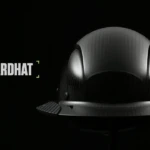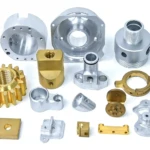Die-Cast vs Triple Flange Hoops: Snare Drum Difference Discussion
Introduction
When it comes to choosing the right hoops for your snare drum, the debate between die-cast and triple flange hoops is ever-present. Each hoop type has its unique characteristics, benefits, and ideal use cases, making the choice largely dependent on personal preference and playing style. This discussion explores the nuances of die-cast versus triple flange hoops, including their construction, sound profiles, and impact on performance.
1. Understanding Drum Hoops: Structure and Function
Drum hoops, or rims, are essential components that secure the drumhead to the shell and affect tuning, sound, and playability. While materials and construction methods vary, most hoops fall into two categories:
Die-Cast Hoops
- Construction: Made from molten metal poured into a mold, die-cast hoops are rigid, dense, and uniform.
- Advantages:
- Tuning Stability: The rigid structure ensures consistent tension across the drumhead.
- Focused Tone: Produces a strong fundamental note with less overtone.
- Durability: Resistant to bending, making them ideal for heavy hitters.
- Disadvantages:
- Reduced Resonance: The added mass dampens the drum’s natural resonance.
- Higher Cost: Manufacturing complexity makes die-cast hoops more expensive.
- Challenging Tuning: Less forgiving during tuning adjustments.
Triple Flange Hoops
- Construction: Made from thinner metal bent into a triple-layered rim.
- Advantages:
- Increased Resonance: Allows the drum to vibrate more freely, producing richer overtones.
- Lighter Weight: Easier to transport and less taxing on hardware.
- Affordability: Simpler manufacturing process leads to lower costs.
- Disadvantages:
- Weaker Tuning Stability: Flexible structure can lead to uneven tension.
- Prone to Bending: Less durable compared to die-cast hoops.
2. Sound Characteristics: Die-Cast vs Triple Flange
The hoop type significantly influences the snare drum’s sound. Here’s how they compare:
Die-Cast Hoops
- Tonal Focus: Die-cast hoops emphasize the drum’s fundamental pitch, providing a cleaner, more controlled sound.
- Attack: Rimshots and cross-sticks sound sharper and more defined due to the hoop’s rigidity.
- Pitch Bends: Unique to die-cast hoops, the rigidity allows for clear pitch bends, as famously demonstrated by Art Blakey.
- Sustain: The added mass reduces resonance, shortening the drum’s sustain.
Triple Flange Hoops
- Tonal Richness: Triple flange hoops enhance the drum’s overtones, producing a warm, open sound.
- Dynamic Range: Offers a broader range of tones, especially at softer dynamics.
- Natural Resonance: The flexibility of the hoop allows the shell to contribute more to the sound.
- Sustain: Longer sustain compared to die-cast hoops, making them ideal for genres like jazz and orchestral music.
3. Playability and Player Preferences
Die-Cast Hoops
- Preferred by drummers who:
- Need precise tuning for high-pitched snares.
- Play in genres requiring punchy, controlled sounds, such as rock, metal, or hip-hop.
- Perform aggressive rimshots and cross-sticks that demand consistency.
Triple Flange Hoops
- Favored by drummers who:
- Appreciate natural resonance and overtone complexity.
- Play in dynamic, expressive styles like jazz, funk, or acoustic settings.
- Seek affordability and lightweight gear.
4. Historical Perspective
The choice between die-cast and triple flange hoops has evolved with drumming trends:
- Die-Cast Hoops: Popularized in the mid-20th century, particularly by jazz and bebop drummers who valued clean, articulate tones. Modern players appreciate their precision in recording settings.
- Triple Flange Hoops: Rooted in early drum design, they remain a staple for their versatility and classic, resonant sound.
5. Practical Applications: When to Choose Which Hoop
Use Cases for Die-Cast Hoops
- Studio Recording: Die-cast hoops minimize unwanted overtones, offering a more controlled sound ideal for mixing.
- Live Performances: Their stability ensures consistent sound in high-energy settings.
- High-Tuning Needs: Die-cast hoops excel when tuning snare drums to higher pitches, maintaining tension and clarity.
Use Cases for Triple Flange Hoops
- Dynamic Genres: Ideal for genres that require tonal complexity and resonance, such as jazz or acoustic pop.
- Budget-Friendly Options: Suitable for beginner drummers or those with budget constraints.
- Flexible Playability: Accommodates a wide range of playing styles due to its forgiving nature.
6. Technical Considerations: Tuning and Maintenance
Tuning with Die-Cast Hoops
- Requires precise tuning due to the hoop’s rigidity.
- Difficult to adjust “on the fly,” making pre-performance preparation critical.
Tuning with Triple Flange Hoops
- More forgiving and adaptable during tuning adjustments.
- Allows for easier experimentation with head tension.
7. Aesthetic Appeal: The Visual Factor
While sound and performance are paramount, aesthetics also play a role in hoop selection:
- Die-Cast Hoops: The polished, robust appearance appeals to drummers seeking a professional look.
- Triple Flange Hoops: Their traditional, understated design complements vintage or classic drum kits.
8. Expert Recommendations
Drummers and manufacturers weigh in:
- Great Light Metal Services: “Die-cast hoops are our specialty. Their durability, precision, and aesthetic appeal make them a favorite among professionals.”
- Session Drummers: Many studio players recommend die-cast hoops for their clarity and ease of mixing.
- Touring Drummers: Often lean toward triple flange hoops for their lightweight nature and versatility.
9. Great Light’s Die-Casting Expertise
Great Light’s metal die-casting services offer industry-leading precision and quality:
- Customization: Tailored die-cast hoops for specific tonal and aesthetic requirements.
- Durability: High-grade alloys ensure long-lasting performance.
- Expert Craftsmanship: Precision machining guarantees uniformity and consistency.
Die Cast Vs Triple Flange Hoops Snare Drum Difference Discussion Conclusion
The choice between die-cast and triple flange hoops ultimately depends on your musical style, budget, and performance needs. Die-cast hoops offer unparalleled precision, durability, and tonal focus, making them ideal for controlled, punchy sounds. Triple flange hoops, on the other hand, provide warmth, resonance, and affordability, excelling in dynamic and expressive genres.
Whether you’re upgrading your snare drum or customizing a new kit, understanding these differences ensures you make an informed decision. For those seeking high-quality, custom die-cast hoops, Great Light’s precision manufacturing services are an excellent choice.
Order your die-cast hoops today and experience the difference in sound and performance!

















